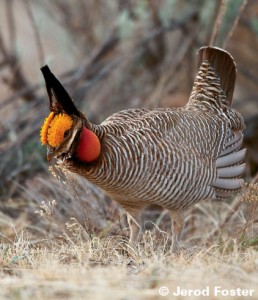USDA announces Conservation Incentives for working grass, range and pasture lands
Agriculture Secretary Tom Vilsack announced that beginning Sept. 1, farmers and ranchers can apply for financial assistance to help conserve working grasslands, rangeland and pastureland while maintaining the areas as livestock grazing lands.
The initiative is part of the voluntary Conservation Reserve Program (CRP), a federally funded program that for 30 years has assisted agricultural producers with the cost of restoring, enhancing and protecting certain grasses, shrubs and trees to improve water quality, prevent soil erosion and reduce loss of wildlife habitat. In return, the U.S. Department of Agriculture (USDA) provides participants with rental payments and cost-share assistance. CRP has helped farmers and ranchers prevent more than 8 billion tons of soil from eroding, reduce nitrogen and phosphorous runoff relative to cropland by 95 and 85 percent respectively, and even sequester 43 million tons of greenhouse gases annually, equal to taking 8 million cars off the road.
“A record 400 million acres and 600,000 producers and landowners are currently enrolled in USDA’s conservation programs. The Conservation Reserve Program has been one of the most successful conservation programs in the history of the country, and we are pleased to begin these grasslands incentives as we celebrate the program’s 30th year,” said Vilsack. “This is another great example of how agricultural production can work hand in hand with efforts to improve the environment and increase wildlife habitat.”
The CRP-Grasslands initiative will provide participants who establish long-term, resource-conserving covers with annual rental payments up to 75 percent of the grazing value of the land. Cost-share assistance also is available for up to 50 percent of the covers and other practices, such as cross fencing to support rotational grazing or improving pasture cover to benefit pollinators or other wildlife. Participants may still conduct common grazing practices, produce hay, mow, or harvest for seed production, conduct fire rehabilitation, and construct firebreaks and fences.
With the publication of the CRP regulation today, the Farm Service Agency will accept applications on an ongoing basis beginning Sept. 1, 2015, with those applications scored against published ranking criteria, and approved based on the competiveness of the offer. The ranking period will occur at least once per year and be announced at least 30 days prior to its start. The end of the first ranking period will be Nov. 20, 2015.
Later this week, USDA will also announce state-by-state allotments for the State Acres for Wildlife Enhancement (SAFE). Through SAFE, also a CRP initiative, up to 400,000 acres of additional agricultural land across 37 states will be eligible for wildlife habitat restoration funding. The additional acres are part of an earlier CRP wildlife habitat announcement made by Secretary Vilsack. Currently, more than 1 million acres, representing 98 projects, are enrolled in SAFE.
To learn more about participating in CRP-Grasslands or SAFE, visit www.fsa.usda.gov/crp or consult with the local Farm Service Agency county office. To locate a nearby Farm Service Agency office, visit http://offices.usda.gov. To learn more about the 30th anniversary of CRP, visit www.fsa.usda.gov/CRPis30 or follow on Twitter using #CRPis30.
The CRP-Grasslands program was made possible by the 2014 Farm Bill, which builds on historic economic gains in rural America over the past six years while achieving meaningful reform and billions of dollars in savings for the taxpayer. Since enactment, USDA has made significant progress to implement each provision of this critical legislation, including providing disaster relief to farmers and ranchers; strengthening risk management tools; expanding access to rural credit; funding critical research; establishing innovative public-private conservation partnerships; developing new markets for rural-made products; and investing in infrastructure, housing and community facilities to help improve quality of life in rural America. For more information, visit www.usda.gov/farmbill.


